
Carl August Nielsen was a Danish composer, conductor and violinist, widely recognized as his country's most prominent composer.

The earliest traces of Danish music go back to the many twisting Bronze-Age horns or lurs which some experts have identified as musical instruments. They have been discovered in various parts of Scandinavia, mostly Denmark, since the end of the 18th century. Denmark's most famous classical composer is Carl Nielsen, especially remembered for his six symphonies, while the Royal Danish Ballet specializes in the work of Danish choreographer August Bournonville. Danes have distinguished themselves as jazz musicians, and the Copenhagen Jazz Festival has acquired an international reputation. The modern pop and rock scene has produced a few names of note, including MØ, Dizzy Mizz Lizzy, Lukas Graham, D-A-D, Tina Dico, Aqua, The Raveonettes, Michael Learns to Rock, Volbeat, Alphabeat, Safri Duo, Medina, Oh Land, Kashmir, King Diamond, Outlandish, and Mew. Lars Ulrich is the first Danish musician to be inducted into the Rock and Roll Hall of Fame.

Niels Wilhelm Gade was a Danish composer, conductor, violinist, organist and teacher. Together with Johan Peter Emilius Hartmann, he was the leading Danish musician of his day, in the period known as the Danish Golden Age.
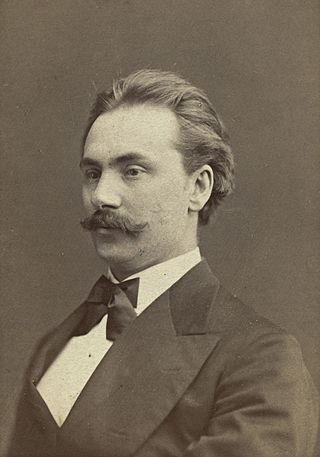
Johan Severin Svendsen was a Norwegian composer, conductor and violinist. Born in Christiania, Norway, he lived most his life in Copenhagen, Denmark.

Otto Valdemar Malling was a Danish composer, from 1900 the cathedral organist in Copenhagen and from 1889 professor, then from 1899 Director of the Royal Danish Academy of Music, Copenhagen.

Georg Valdemar Høeberg was a Danish violinist, conductor and composer. He was the brother of the opera singer Albert Høeberg and cellist Ernst Høeberg and grandson of Hans Christian Lumbye.

The Royal Danish Academy of Music, or Royal Danish Conservatory of Music, in Copenhagen is the oldest professional institution of musical education in Denmark as well as the largest, with approximately 400 students. It was established in 1867 as Kjøbenhavns Musikkonservatorium by Niels Gade – who was also the first rector –, J.P.E. Hartmann and Holger Simon Paulli on the basis of a testamentary gift from the jeweler P.W. Moldenhauer, and with inspiration from the Leipzig Conservatory and a conservatory founded by Giuseppe Siboni in Copenhagen in 1827. Carl Nielsen was a teacher in the period 1916–1919 and the rector during the last year of his life.
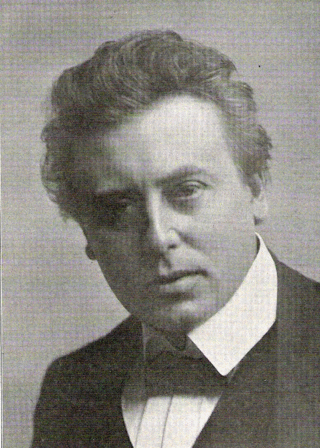
Louis Christian August Glass was a Danish composer.
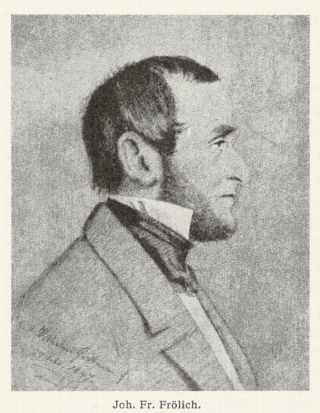
Johannes Frederik Fröhlich, a Danish violinist, conductor and composer, was a precursor of Niels Gade and J.P.E. Hartmann, and a central figure in Danish musical circles during the Romantic era.

Johan Peter Emilius Hartmann was, together with his son-in-law Niels W. Gade, the leading Danish composer of the 19th century, a period known as the Danish Golden Age. According to Alfred Einstein, he was "the real founder of the Romantic movement in Denmark and even in all Scandinavia". J.P.E. Hartmann was the third generation of composers in the Danish musical Hartmann family.

Emil Hartmann was a Danish composer of the romantic period, fourth generation of composers in the Danish Hartmann musical family.
Johann Ernst Hartmann was a Danish composer and violinist. He is remembered in particular for his two operas on texts by Johannes Ewald in which he helped creating a national musical style. The first of these, Balders død, builds on the old Nordic mythology and uses dark colours when depicting the old Gods and Valkyries. The second, Fiskerne, describes contemporary fishermen’s lives, and uses melodies inspired by the Scandinavian folk style.
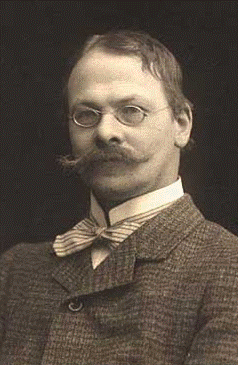
Ludvig Sophus Adolph Theodor Holm was a Danish violinist and composer.

Franz Xaver Neruda was a Czech-Danish cellist and composer of Moravian origin.

Frederik Rung was a Danish conductor and composer.

Carl Nielsen's At the Bier of a Young Artist for string orchestra, FS 58, was written for the funeral of the Danish painter Oluf Hartmann in January 1910.

Musikforeningen in Copenhagen was Denmark's most important concert venue in the 19th century. It operated from 1838 to 1931 but it was especially under the leadership of Niels Gade (1850–90) that it became a meeting place for the city's music life with its own symphony orchestra and choir. Carl Nielsen was director from 1915–27. Other leaders included Franz Gläser, Emil Hartmann and Franz Neruda.
Frederick Thorkildsen Wexschall was a Danish classical composer, violinist, and concertmaster of the Copenhagen Royal Orchestra. A pupil of Bohemian composer František Martin Pecháček and German conductor Louis Spohr, Wexschall was married to the Danish stage actress and mezzo-soprano opera singer Anna Nielsen.
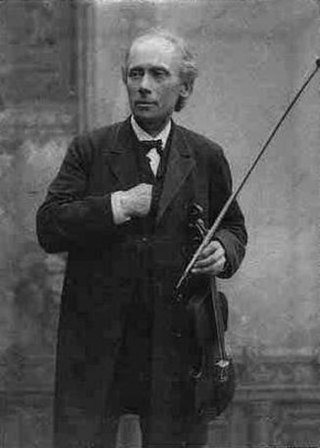
Lars Valdemar Tofte was a Danish violinist who taught for a half century and trained over 300 of Denmark's violinists.
Christina Åstrand is a Danish violinist. When she was just 22, she became leader of the Danish National Symphony Orchestra, a position she still holds today.

















